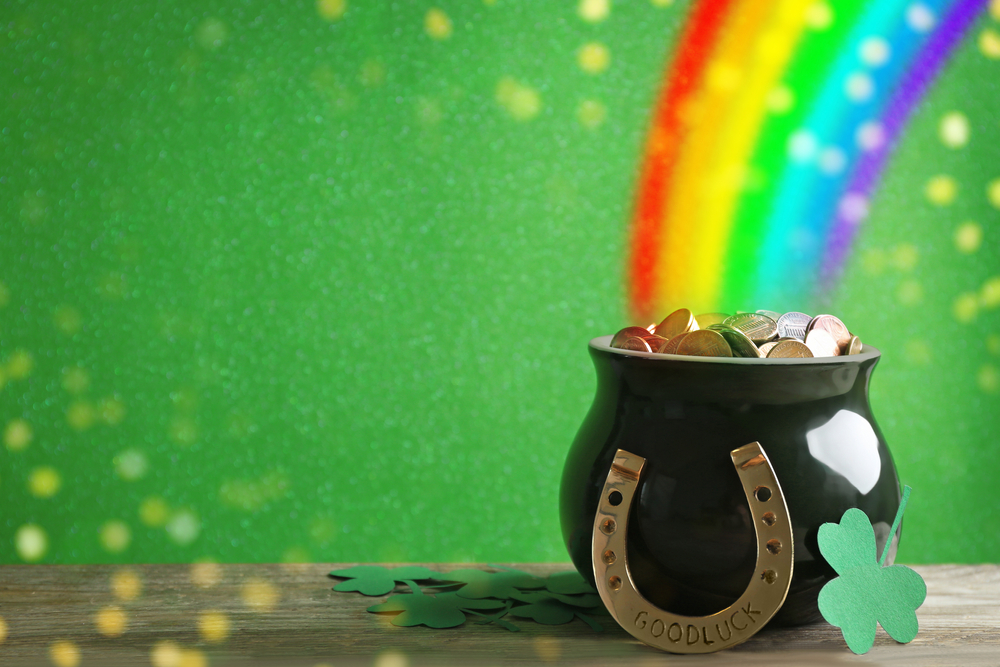
Have you ever wondered why we celebrate St. Patrick’s Day? Every March 17th, people around the world don their green apparel and take part in parades, parties, and other festivities to honor the patron saint of Ireland. But what is St. Patrick’s Day all about? Let’s explore the history behind this holiday to find out!
Some believe St. Patrick’s Day began as a religious feast day in the early 17th century to commemorate Saint Patrick – the patron saint of Ireland. Born in Britain, he was kidnapped at age 16 and taken to Ireland as a slave. After escaping and returning home, he then became a priest and returned to Ireland on a mission to convert pagans to Christianity. His efforts were so successful that he is credited with converting most of Ireland to Christianity!
Over time, St. Patrick’s Day has evolved from a religious feast day into an international celebration of Irish culture with parades, parties, music, feasting, and more! People have embraced wearing green as one way to show their appreciation for Irish heritage and express solidarity with those who are proud of their roots – no matter where they live in the world!
History Of St. Patrick’s Day
St. Patrick’s Day is an annual holiday celebrated on the 17th of March in honour of St. Patrick, the patron saint of Ireland. The day has been celebrated since the early 1600s and has grown to become a worldwide celebration of Irish culture and tradition.
The origins of this event are unclear, but it is believed that St. Patrick used shamrocks as a metaphor for the Holy Trinity when he was converting pagans in Ireland to Christianity. The use of a shamrock to celebrate St. Patrick’s Day began in the 1700s when green-embroidered shamrocks became popular amongst Irish immigrants living in America.
Since then, St. Patrick’s Day has been marked with parades, feasts, ceremonies, and traditional Irish music and dance performances. The wearing of green clothing and decorations have also become synonymous with this holiday as a way to show national pride in Irish traditions and culture. Overall, the day serves as an opportunity for people around the world to remember their heritage and celebrate all things Irish!
Symbols And Traditions
Moving on from the history of St. Patrick’s Day, it’s time to explore some of the symbols and traditions that have come to be associated with this holiday. As one of the most widely celebrated holidays in many countries, it has a wide variety of symbols and traditions observed by people everywhere.
The most recognizable symbol of St. Patrick’s Day is the shamrock. It is said that St. Patrick used the three-leafed clover as a way to explain the Christian Trinity – Father, Son, and Holy Spirit – to Irish pagans when he was first introducing Christianity to Ireland in the 5th century. The shamrock is often seen worn on clothing or pinned onto hats as a sign of good luck and pride for one’s Irish heritage.
Other popular traditions include parades, music and dancing, food such as corned beef and cabbage, and drinking green beer or Irish whiskey. Each person’s personal experience with celebrating St. Patrick’s Day may vary depending on their location or cultural background, but these symbols are seen all over the world in some form or another each year on March 17th.
Celebrations Around The World
St. Patrick’s Day is celebrated around the world in different ways. In Ireland, it is a national holiday with many parades and fireworks. People wear green clothes and shamrocks to symbolize their Irish heritage. In the United States, there are parades, festivals, and concerts that celebrate Irish culture. People often gather in pubs to drink Guinness beer or Irish whiskey and listen to traditional music.
In Canada, St. Patrick’s Day is also a popular celebration. Canadians typically have big parties with music, dancing, and green decorations. They also enjoy traditional Irish dishes like colcannon potatoes and Dublin coddle stew.
Many countries also mark the occasion by lighting up landmark buildings in green lights on March 17th each year including the London Eye in England, the Eiffel Tower in France, and South Korea’s Namsan Tower in Seoul. As a result of this global celebration of Irish culture, St. Patrick’s Day has become one of the most widely observed holidays around the world each year.
How To Celebrate Safely
To ensure a safe St. Patrick’s Day celebration, there are a few things to keep in mind. First and foremost, it is important to remain mindful of the current restrictions surrounding large gatherings due to the COVID-19 pandemic. If you plan on having a small get-together with family or friends, ensure everyone follows local safety guidelines and wears masks when necessary. Additionally, if you plan on hosting an outdoor gathering, be sure to follow local fire codes and regulations.
Secondly, if you choose to venture out for socially distanced fun, remember that alcohol consumption can lead to dangerous situations. Keep track of your drink and be sure it is closed at all times when not in use. It is also wise to avoid drinking games as they can quickly become out of control.
Finally, if you choose to celebrate, ensure you have a designated driver or reliable transportation home afterwards so that everyone stays safe. With these precautions in mind, celebrating St. Patrick’s Day can still be enjoyable for all involved!
Cultural Impact
St. Patrick’s Day has become a widely celebrated holiday in Ireland and the United States. It is an important cultural event and one which is steeped in history and tradition. In modern times, it is celebrated with parades and other festivities to mark the day.
In the United States, St. Patrick’s Day is a time for people of all backgrounds to come together to celebrate Irish culture and heritage. This includes food, music, dance, art, and traditional dress. People will often dress up in green clothing or wear shamrocks on their lapels as symbols of the Irish culture that they are celebrating on this special day. Additionally, many cities host large parades with marching bands, floats, and more to commemorate the holiday.
The celebration of St. Patrick’s Day has spread over recent years to countries all around the world who join in the revelry by hosting their own parades and festivities. With its deep historical roots tied to Irish nationalism and pride, it remains an important holiday in many cultures today; providing a way for people everywhere to connect with their ancestral roots while also having fun!
Conclusion
In conclusion, St. Patrick’s Day is a day that celebrates the patron saint of Ireland and has become an international holiday. It has many symbols such as shamrocks, leprechauns, and green clothing that are recognized around the world. People celebrate in different ways – gathering with family and friends or attending parades, festivals, and other events. To make sure your celebrations are safe and enjoyable, follow recommended guidelines from health officials.
No matter how you observe St. Patrick’s Day, it’s a great way to reflect on Irish culture and history and celebrate this special day with those around you. I love all the symbols associated with the holiday, like shamrocks and leprechauns – they make everything seem more fun! From parades to parties to wearing green clothes, there are plenty of ways to show your appreciation for St. Patrick’s Day without putting yourself or others at risk during the current pandemic.
Happy St. Patrick’s Day! May the luck of the Irish be with you today and always!










